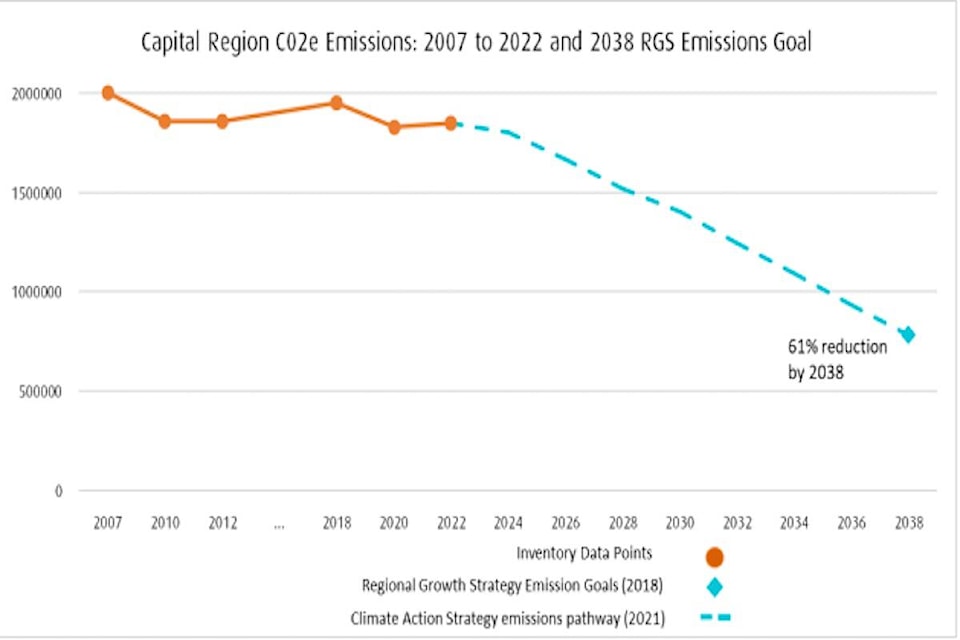The usual suspects are to blame for the vast majority of greenhouse gases (GHG) in the Capital Regional District, which have been on the rise in recent years.
Driving fossil-fuel-powered vehicles and buildings using natural gas were the main culprits responsible for about 75 per cent of the region’s total carbon pollution, as outlined in the CRD’s 2022 GHG inventory.
Total emissions have dropped seven per cent since the base year of 2007 – marking a 25 per cent decline on a per capita basis over the 15-year period.
However, the region’s emissions grew to 1.86 million tonnes of carbon dioxide equivalent (tCO2e) in 2022, up one per cent from 1.8 million tonnes when the last biennial inventory was done in 2020.
That leaves a tall task ahead as the region will need to cut emissions by an additional 54 per cent (from 2007 levels) if the CRD wants to meet the reduction target it set for 2038.
Road transportation once again accounted for the largest chunk of emissions, registering 41.5 per cent of the CRD’s total output. The region’s 291,245 gas or diesel vehicles produced 99.8 per cent of road transportation emissions last year.
Air pollution from buildings – markedly due to the use of natural gas – accounted for 33.3 per cent of regional emissions. Use of that fuel in buildings also increased by 10 per cent compared to 2020.
“To achieve regional emissions targets, the natural gas use trend must reverse, and the transition to zero-emission transportation must accelerate while protecting and conserving ecosystem health and improving our region’s resilience,” CRD staff said in a report.
Burning natural gas was responsible for more than half of all emissions coming from residential buildings and almost 70 per cent of the GHGs produced by commercial and institutional structures. Electricity produces 0.07 per cent of CRD building emissions.
CRD staff said the reduced use of heating oil and the greening of B.C.’s electrical grid resulted in building emissions being seven per cent lower in 2022 than they were in 2007.
Uneased directors of the CRD’s environmental services committee noted Wednesday (Sept. 27) that the rising GHGs in their backyard come amid a record wildfire season in the province that proved deadly for some fighting the flames.
The committee supported a motion from director Jeremy Caradonna directing the CRD board to consider having staff present “new, innovative and ambitious options” to reverse the rising emissions trend.
“I don’t think it’s acceptable for us to just say it’s unfortunate that emissions are up this year and hope that things will change,” the Victoria councillor said. “I think it’s an opportunity to look in the mirror and see what’s working and what’s not, how can we redouble our efforts.”
Globally, average temperatures have risen by 1.1 C since pre-industrial times, putting the world only a few tenths of a degree from the 1.5 C limit that a Nobel Peace Prize-winning collection of scientists has said is needed to stave off the worst impacts of climate change – including extreme heat, wildfires, floods, more intense storms, irreversible ice sheet melting and more.
READ: World on ‘thin ice’ as UN climate report gives stark warning
